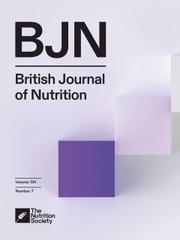No CrossRef data available.
Article contents
Preventive role of intermittent fasting and vitamin E in mitigating propylthiouracil-induced hypothyroidism progression in a rat model
Published online by Cambridge University Press: 11 April 2025
Abstract

Thyroid disorders are increasingly prevalent globally and are considered metabolic-lifestyle diseases. While medications can manage thyroid dysfunction, they are usually lifelong, costly and not always practical. Intermittent fasting (IF), a highly adaptable dietary regimen, has been shown to influence lifestyle, gut microbiome and circadian rhythms. Our study hypothesised that IF, combined with vitamin supplementation, could reduce the risk of thyroid disorders due to their antioxidant effects. In this study, experimental animals were divided into five groups: euthyroid, hypothyroidism control, IF + vitamin E (Vit. E), Vit. E and IF. Hypothyroidism was induced using propylthiouracil over 24 days, and IF and Vit. E (66 mg/ml) were administered based on the experimental group. The hypothyroid animals exhibited increased anxiety, weight gain, lipid peroxidation and a significant reduction in thyroid hormone levels, locomotor activity and antioxidant levels—clear signs of thyroid dysfunction’s impact on metabolism and overall health. Our proposed therapies IF and Vit. E effectively mitigated thyroid damage. Drawing inspiration from ancient ayurveda and modern healthcare strategies, these cost-effective and practical regimens offer a promising solution to managing thyroid disorders globally.
Information
- Type
- Research Article
- Information
- Copyright
- © The Author(s), 2025. Published by Cambridge University Press on behalf of The Nutrition Society


